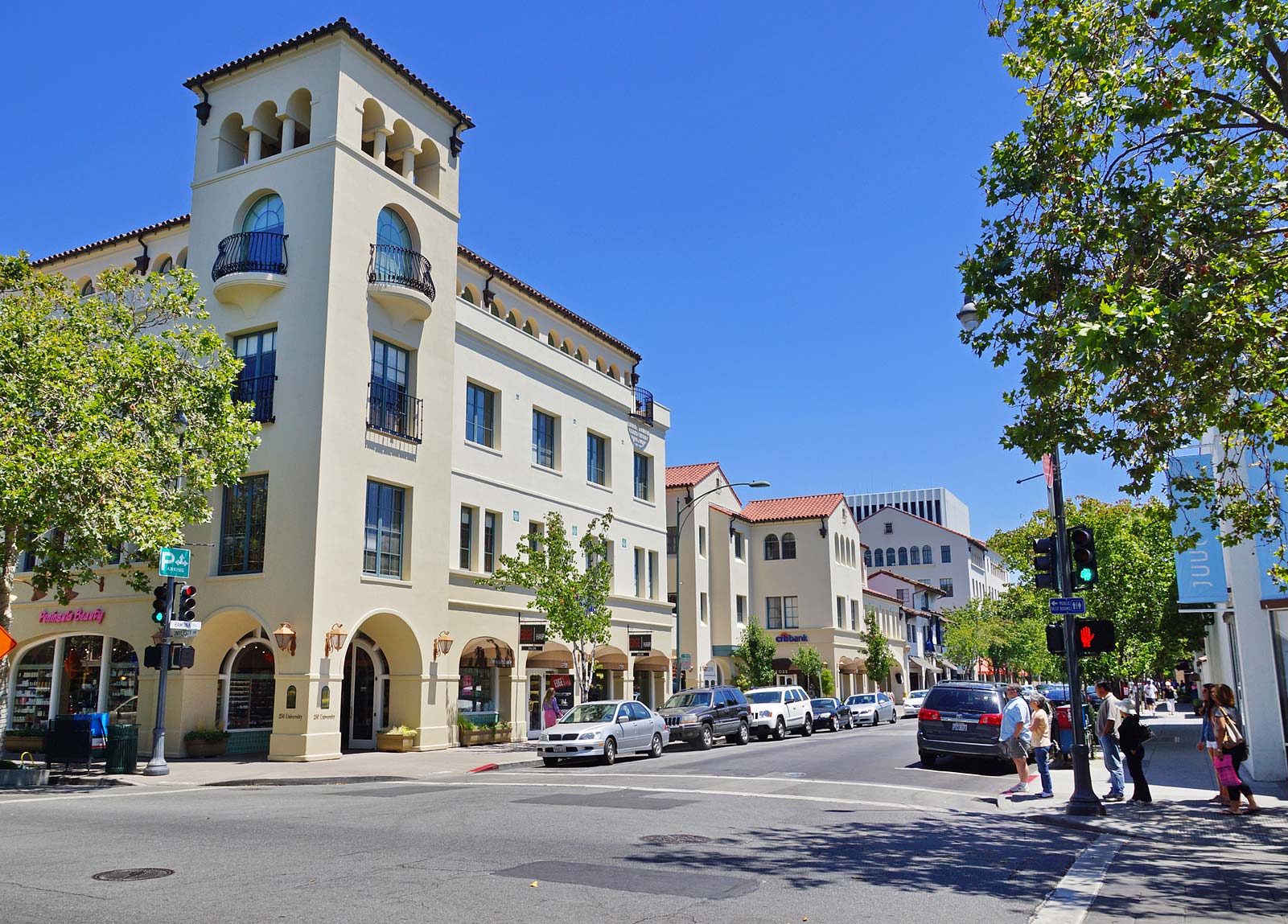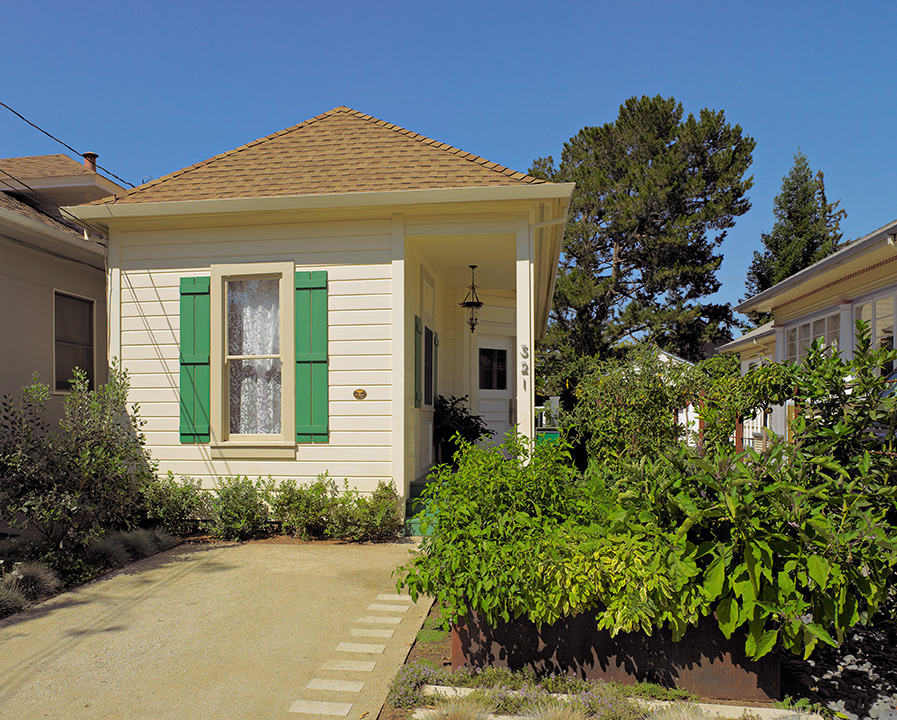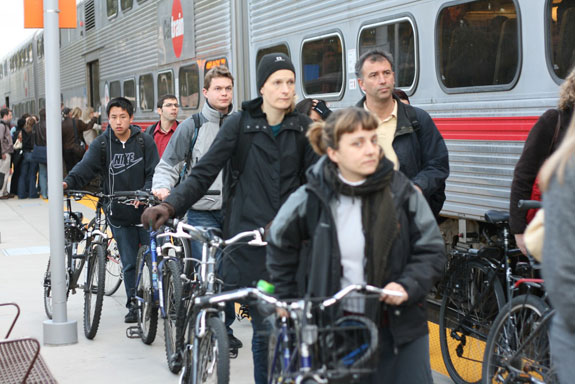This post comes to Palo Alto Pulse from Mike Greenfield, a Palo Alto resident who blogs about start-ups, the perils of entrepreneurism, housing, transportation and more at numeratechoir.
The other night, I found myself reading my almost-three-year-old daughter a children’s book from 1950. The book focused on family life, and I had to explain some of the things she didn’t recognize. The father was smoking a pipe, and sitting in front of a fire. There were no TVs, phones, or laptops anywhere in sight. Explaining to her that I’d had neither a laptop nor a cellphone growing up unleashed a series of “why”s I could only answer meekly.
The world has changed immensely — not only since 1950, but since 1996, when I arrived at Stanford as an 18-year-old freshman from Philadelphia. There are things I like about those changes, and things I don’t like, but one thing is clear: there’s no going back.
In 2006, ten years after first moving to the Bay Area, my wife and I bought a small house in downtown Palo Alto. We chose Palo Alto largely because of its innovative culture. Palo Alto was a place for crazy ideas that just might change the world, a place that wasn’t afraid to reinvent itself, a place where brilliant twenty-somethings could create something amazing.
In 2006, Palo Alto was the place for crazy ideas, the place where the smartest (if not the most acclaimed) would go to do a startup. My company, LinkedIn, had around 60 employees on one side of Palo Alto. On the other side, Palantir and Facebook were setting up small offices downtown.
Eight years later, Palo Alto is still great, but it has lost a little bit of its optimistic, youthful craziness. The city’s population has aged a bit, and a twenty-five year-old grad student with a brilliant idea — like Sergey Brin or Larry Page in 1998 — couldn’t afford to live in Palo Alto, nor could he afford to set up his office here. At nearly $100/square foot/year, office space in Palo Alto costs two to three times as much as office space in San Francisco. That’s a big part of the reason that most of the Bay Area’s top startups of the past five years — Twitter, Dropbox, Uber, Airbnb, Pinterest — are based in San Francisco.
When I started my own company last year, we decided to be in Palo Alto, but we’ve paid the price in multiple ways. It took us six months to find a 1000-foot sublease downtown, and we pay over $6000/month for a space that isn’t likely to grace the cover of an architecture magazine. Why is office space so expensive and hard to find? The answer is very simple: there is virtually no available inventory, as demand far exceeds supply. The same dynamic exists in the residential market. That’s a relatively good problem to have, but it’s still a problem: if it continues, Palo Alto’s population will continue to get older, and its offices will be populated not by startups but by venture capitalists, law firms, and a few big companies like Palantir.
 So how can Palo Alto sustain its vibrant, innovative spirit? The answer is simple on the surface: the city needs to increase its supply of both housing and office space, so that costs will decrease and more not-insanely-wealthy people can be accommodated. There’s a very good reason that developers want to build houses, apartment buildings, and offices in Palo Alto: people want to live and work here. If it relaxed some of its extraordinarily stringent zoning policies, Palo Alto could see substantial residential and commercial inventory growth that would benefit many potential new residents and workers.
So how can Palo Alto sustain its vibrant, innovative spirit? The answer is simple on the surface: the city needs to increase its supply of both housing and office space, so that costs will decrease and more not-insanely-wealthy people can be accommodated. There’s a very good reason that developers want to build houses, apartment buildings, and offices in Palo Alto: people want to live and work here. If it relaxed some of its extraordinarily stringent zoning policies, Palo Alto could see substantial residential and commercial inventory growth that would benefit many potential new residents and workers.
This is easier said than done, however. The first concern is political: the loudest local voices on this issue are saying Palo Alto needs less development. Those voices generally come from people who aren’t suffering from the supply-demand imbalance. They are mostly longtime residents who frequently travel by car, and are frustrated by traffic and parking troubles. Their reaction, and the city’s default options in creating a plan for the future, would seem to solve the parking and traffic issues: either
make it harder for individuals and developers to build, or at least keep it as hard as it is now. However, this approach looks at two of the symptoms of the problem (traffic and parking), and deals with those symptoms rather than the deeper problems of imbalance, vibrancy, and infrastructure. Moreover, this “stop any development” would exacerbate the supply-demand imbalance, and turn Palo Alto into a town of 40-, 50-, and 60-something executives and VCs. I have nothing against 50-something VCs, but I’d also love to see more 20-something entrepreneurs — not to mention the engineers, teachers, designers, and city employees who can’t afford to live here now.
How, then, can the city put in place something that improves Palo Alto’s vibrancy while dealing with the challenges of those loudest voices? Palo Alto needs to simultaneously address two challenges: the supply-demand mismatch (easy: ease regulation), and the city’s transportation and infrastructure challenges (harder).
Solving the transportation issue is hard, because the obvious approach — more parking spaces — exacerbates the traffic problem. With free or very cheap parking and few non-driving options, there is currently little reason for most people not to drive to work, so traffic increases. To reduce traffic and parking problems, the city should charge an appropriate amount for parking. 200 square feet of office space downtown costs approximately $17,000 per year. In contrast a 200-square foot parking space in a lot costs a few hundred dollars a year, and that same parking space on the street is free. Increasing parking costs overnight would be a huge shock; instead the city could make the change gradually and charge $10/month to park on the street next month, $20 the month after that, then $30, $40, etc., up to a fair market rate, giving drivers time to adjust.
Also needed are alternatives to driving. Many thousands of people work in downtown Palo Alto, which means the area can be a great laboratory for new transportation solutions. Are there places in Redwood City, San Jose, and San Francisco that could support Google bus-style shuttles? Could Palo Alto encourage commuting by means other than cars with moderate density buildings that would have fast and regular transportation to downtown, with far fewer parking spots per unit? Could a dedicated fast bus or train between downtown Palo Alto and downtown Mountain View be a reasonable alternative to VTA buses (too slow), trains (too infrequent), and driving (doesn’t scale)? I’d love to see the city test programs like these, much as a startup would test a new product: no fancy studies, no commissions to talk about talking about something — just try it, see if it works, and scale it if it does. A transportation demand management program could be well-suited for this.
In short, Palo Alto needs to embrace a changing world. Let’s not defensively try to return to the “good old days” of decades ago, let’s be bold and decisive. Some day, we or our kids can look back at 1996 and 2014 and smile at all of the crazy backwards things people were doing. The best way to do that is to go on offense: allow the growth that both businesses and potential residents are clamoring for, and put in place intelligent infrastructure and transportation worthy of one of the world’s most innovative cities.
Want to take action on the future of transportation and development in Palo Alto?
- Email the Palo Alto City Council with your thoughts: city.council@cityofpaloalto.org
- Vote on November 4th! Check out the Palo Alto Pulse City Council Election overview and stay tuned for more info about the issues facing Palo Alto and where the candidates stand.
Have another point of view on development in Palo Alto? Send us your thoughts at infoatpaloaltopulse.com. We’d love to hear from diverse perspectives on this important issue.








exactly. i am one of those people who have been here > 25 yrs so could argue “to keep things like the good old days”. BUT my adolescent kids remind me that things have to move forward, that PA is becoming stuck and fuddy-duddy, and that they dont consider a future in PA. The current obstructionism in PA may be cool for those who are already ok, but its not ok for any vital future.